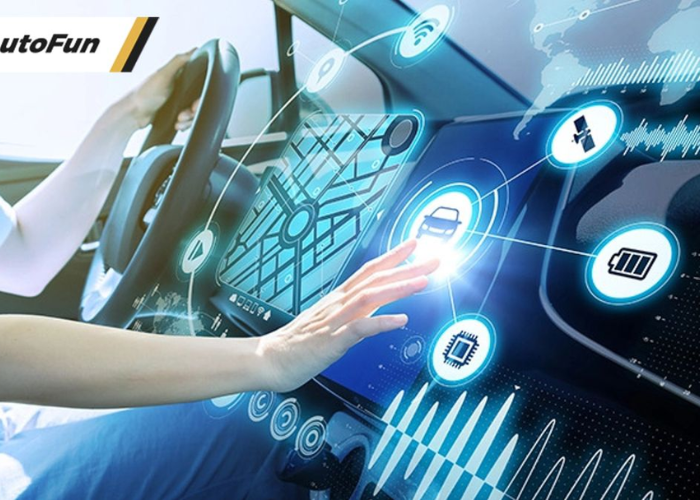The automotive industry has always been at the forefront of innovation, constantly pushing boundaries to create safer, more efficient, and enjoyable driving experiences. Over the past few decades, the integration of cutting-edge technology into vehicles has accelerated at an unprecedented pace, leading to a transformative revolution in the automotive landscape. Today, we stand witness to a remarkable era where the power of car technology is reshaping the way we drive, the vehicles we use, and the future of transportation as a whole. Visit the carautomix to know more about car maintenance and identify the best car product.
The Rise of Electric Vehicles (EVs)
One of the most significant technological shifts in the automotive industry has been the rise of electric vehicles (EVs). As concerns about climate change and environmental sustainability intensify, automakers have embraced electric mobility as a cleaner and greener alternative to traditional internal combustion engine vehicles. EVs have evolved from being niche prototypes to mass-market contenders, thanks to advancements in battery technology, improved charging infrastructure, and government incentives.
The development of high-performance batteries has been instrumental in extending the driving range of EVs, reducing charging times, and lowering costs. As a result, more consumers are making the switch to electric cars, contributing to a greener future while benefiting from the smooth, quiet, and efficient driving experience that EVs offer.
Autonomous Driving: Redefining Mobility
Perhaps the most transformative aspect of car technology is the advent of autonomous driving. Autonomous vehicles (AVs) have the potential to revolutionize the way we commute, making transportation safer, more convenient, and accessible to all.
AVs leverage a sophisticated network of sensors, cameras, and artificial intelligence (AI) algorithms to interpret the surrounding environment, making real-time decisions without human intervention. Companies like Tesla, Waymo, and Uber’s Advanced Technologies Group (ATG) have made significant strides in developing self-driving technology, conducting extensive tests on public roads and accumulating vast amounts of data to refine their algorithms continually.
The promise of autonomous driving extends beyond individual car ownership. Ride-sharing services could become more prevalent, reducing the number of vehicles on the road and easing traffic congestion. Moreover, AVs hold the potential to enhance mobility for the elderly and people with disabilities, granting them newfound independence and freedom.
However, the realization of fully autonomous vehicles is still a work in progress. Technical challenges, regulatory hurdles, and public acceptance remain key obstacles to widespread adoption. Striking the right balance between innovation and safety is crucial to unlocking the full potential of autonomous driving technology.
Connected Cars: Enhancing Communication
Another remarkable development in car technology is the proliferation of connected cars, which enable vehicles to communicate with each other and the surrounding infrastructure. By integrating internet connectivity and various communication protocols, connected cars can exchange vital information in real-time, leading to safer and more efficient driving.
Vehicle-to-vehicle (V2V) communication allows cars to share data about their speed, location, and heading, helping avoid collisions and enabling advanced driver assistance systems (ADAS) to make more informed decisions. For example, if a car ahead suddenly brakes, connected vehicles in its proximity can be alerted instantly, allowing them to react quicker and potentially prevent an accident.
Moreover, connected cars can access real-time traffic data, weather updates, and road conditions, empowering drivers with crucial information to plan their routes better and save time. Fleet management can also benefit from connected car technology, as it enables businesses to monitor and optimize their operations, leading to reduced fuel consumption and maintenance costs.
In-Car Infotainment: Turning Cars into Entertainment Hubs
Long gone are the days when car interiors were limited to steering wheels, pedals, and basic radios. In-car infotainment systems have evolved significantly, transforming vehicles into entertainment hubs on wheels. Modern cars now feature large touchscreen displays with intuitive interfaces that provide access to various applications, music streaming services, navigation tools, and smartphone integration.
Passengers can stay connected, entertained, and productive during their journeys, making the driving experience more enjoyable and convenient. Rear-seat entertainment systems have also become common in family-oriented vehicles, keeping children entertained on long trips.
Furthermore, voice-activated virtual assistants, such as Apple’s Siri and Amazon’s Alexa, have found their way into cars, allowing drivers to control various functions without taking their hands off the wheel or their eyes off the road. This hands-free approach enhances safety and reduces distractions, making for a safer driving environment.
Advanced Safety Systems: Preventing Accidents
Car technology has made tremendous strides in enhancing vehicle safety and reducing the number of accidents on our roads. Advanced Driver Assistance Systems (ADAS) employ an array of sensors, cameras, and radars to monitor the vehicle’s surroundings constantly. These systems can provide critical warnings and intervene to avoid collisions or mitigate their impact.
Features such as adaptive cruise control, lane-keeping assist, blind-spot monitoring, and automatic emergency braking are becoming increasingly common in modern cars. These safety technologies have already proven their worth, helping prevent accidents and saving lives.
As technology continues to evolve, we can expect even more sophisticated safety features to be integrated into vehicles, paving the way for a future with fewer road accidents and fatalities.
The Road Ahead: Challenges and Opportunities.
While the progress of car technology is undoubtedly impressive, it is not without its challenges. The rapid advancement of technology poses concerns about data privacy and cybersecurity. Ensuring the protection of sensitive data and guarding against potential cyber-attacks will be paramount as cars become more interconnected.
Another major challenge is the infrastructure required to support the growing fleet of electric vehicles. Expanding charging networks and increasing the capacity of electrical grids will be essential to meet the demands of an electrified transportation system fully.
Regulatory frameworks will also play a significant role in shaping the future of car technology. Striking the right balance between fostering innovation and safeguarding public safety will be crucial in ensuring the responsible deployment of autonomous vehicles and other emerging technologies.
The automotive industry’s future will be driven by collaboration between automakers, technology companies, policymakers, and consumers. As car technology continues to evolve, it presents an array of opportunities for companies to innovate and for consumers to experience safer, more efficient, and enjoyable journeys.
In conclusion, the revolution in the automotive industry through the harnessing of car technology has ushered in a new era of mobility. Electric vehicles, autonomous driving, connected cars, in-car infotainment, and advanced safety systems are transforming how we perceive and experience transportation. As we continue to embrace and refine these innovations, we inch closer to a future where cars are not merely machines but smart, sustainable, and interconnected companions on our journeys through life. The road ahead is promising, and the automotive industry stands at the cusp of a truly transformative era.
Related posts
Recent Posts
The Importance of Paint Protection Film for Your Vehicle
When it comes to preserving your vehicle’s pristine condition, one term stands out: Paint Protection Film (PPF). Whether you’re a…
Transform Your Daily Routine: 10 Habits for a Healthier Lifestyle
In our fast-paced world, it’s easy to get caught up in the hustle and bustle, often neglecting our own well-being…



